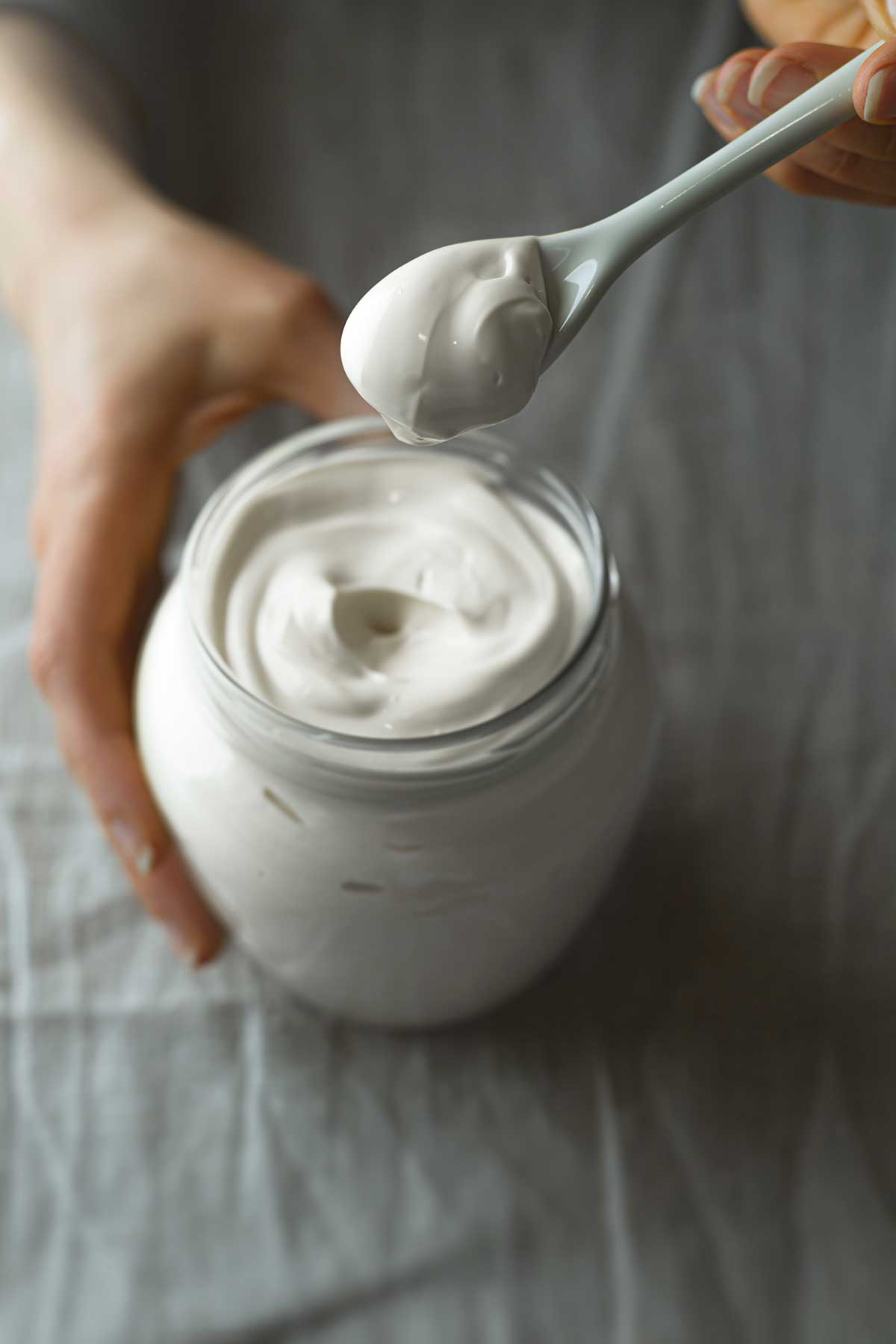
This is one of those recipes that require quotation marks, not out of affectation, but because it’s not a true mayonnaise. It contains no egg yolks or mustard. It’s nothing more than an emulsion of milk and oil. More Brazilian than Portuguese, it’s just now beginning to be used on the Continent. The taste is lighter and cleaner than that of egg-based mayonnaise, allowing other flavors to come through.
☞ Read the Article: The Secret Behind Milk Mayonnaise
Since I was given the recipe, I haven’t stopped finding ways to cook with it. The master recipe is only a canvas for additions. Besides the uses in this book, I’ve smeared the variations on grilled meats and fish, used them as dips and in dressings, spread them on sandwiches, and stirred them into potato salads, much as I do with actual mayonnaise.
Why Isn’t my Mayonnaise Emulsifying?
Like all emulsions, this recipe can be a bit finicky. But adding the oil in a thin stream and stopping when the right consistency is reached is the key. For almost foolproof results, a handheld blender is best, but a small canister blender with a narrow base will do (tall and narrow is best here). Don’t do as some of us did and assume that a stand mixer or food processor will work—it just won’t. If you’re working with a less-than-powerful immersion blender, the consistency of the mayonnaise may turn out thinner than you’d expect. You can help it along by slowly adding 2 more tablespoons of oil to the milk mayonnaise as you continue to blend and it will thicken nicely.
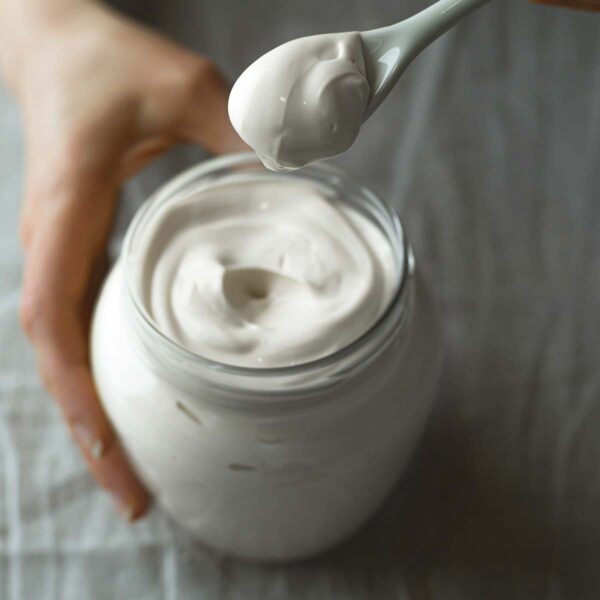
Milk Mayonnaise
Ingredients
- ⅓ cup very cold milk
- ¾ teaspoon fresh lemon juice
- 1 small garlic clove, peeled
- ⅛ teaspoon white pepper
- About ¾ cup vegetable oil, or 1/2 cup (118 ml) vegetable oil plus 1/4 cup (60 ml) olive oil
- Kosher salt
Instructions
- Combine the milk, lemon juice, garlic, and pepper in a 2-cup glass measuring cup. Using a handheld blender (or a blender), buzz on high for 30 seconds until frothy.
- With the motor running on high, slowly pour in the oil a few drops at a time, and gradually increase this to a fine thread, moving the blender up and down, until the mixture thickens lusciously and resembles a soft mayonnaise. You may need more or less oil.
- Season with salt to taste. The mayonnaise will last up to 1 week in the fridge.
Notes
Milk mayonnaise variations
Clockwise from top right: cilantro-ginger, curry, anchovy, sun-dried tomato.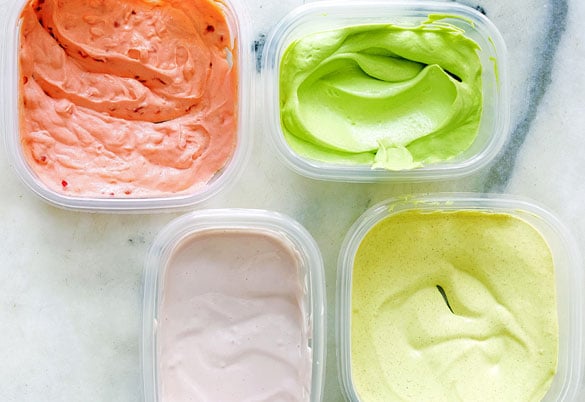
Cilantro and Ginger Milk Mayonnaise | Maionese de Leite com Coentros e Gengibre
Add 1 loosely packed cup of well-dried fresh cilantro leaves and tendril-soft stems and a 1 1/2-inch peeled and grated thumb of ginger to the cup along with the milk, 1 3/4 teaspoons of lemon juice, and the pepper. Omit the garlic. Whir in the oil as directed above. Stir in 1 scallion cut into thin slices on the diagonal.Anchovy Milk Mayonnaise | Maionese de Leite com Anchovas
Add 6 anchovy fillets (generous 1 tablespoon) packed in oil to the cup along with the milk, lemon juice, garlic, and pepper. Whir in the oil as directed above. Omit the salt.Curry Milk Mayonnaise | Maionese de Leite com Caril
Add 2 teaspoons of your favorite curry powder to the cup along with the milk, lemon juice, garlic, and pepper. Whir in the oil as directed above. Before using, let this sit for an hour or so in the fridge to bloom.Tomato Milk Mayonnaise | Maionese de Leite com Tomate
Add 1 1/2 tablespoons of double-concentrate tomato paste to the cup along with the milk, garlic, and pepper. Omit the lemon juice. Whir in the oil as directed above. Stir in 1 tablespoon minced oil-packed sun-dried tomatoes.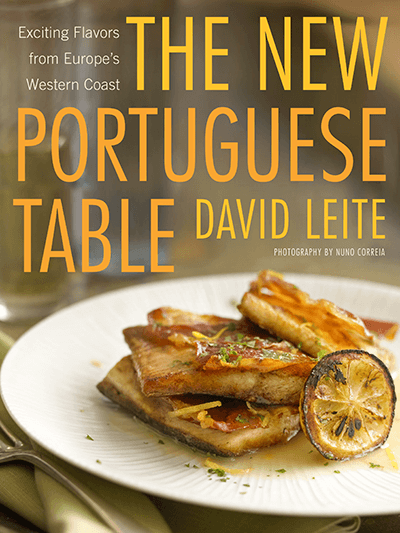
Nutrition
Nutrition information is automatically calculated, so should only be used as an approximation.
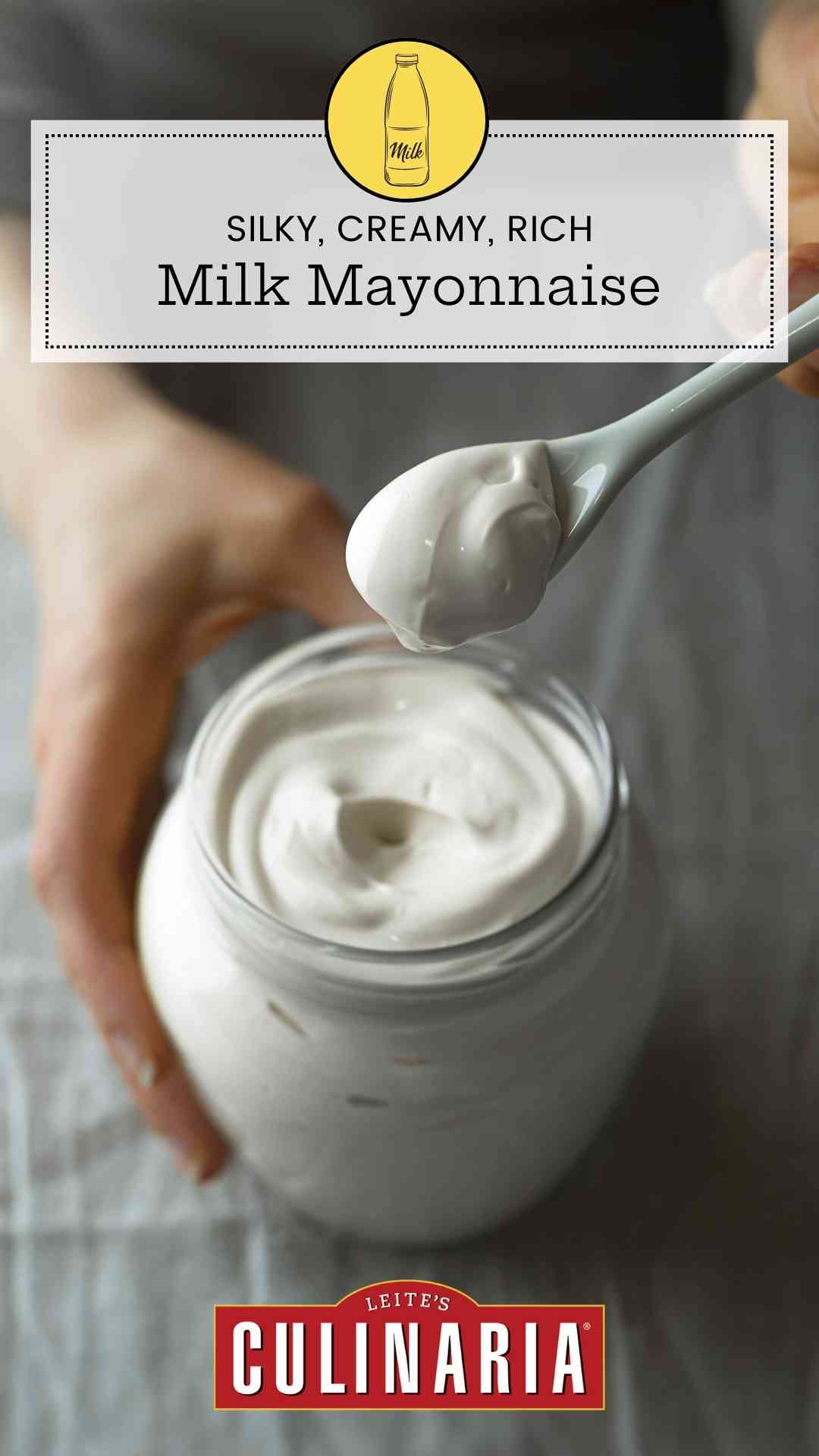










Hi David,
In wanting to avoid raw eggs, I found your recipe several years ago via a blog posting by David Lebovitz. I have made the basic recipe several times, and I always enjoy it. Unintentionally, I have delighted guests that have an egg allergy and are unable to enjoy anything with mayonnaise as a result. The only problem I have had with it is that it doesn’t stand up to being incorporated with other ingredients to make a dressing or sauce; once I mix it with the other ingredients (like mustard, vinegar, ketchup, etc.), the final incorporated product isn’t as thick as it would be with traditional mayonnaise. As you mention in your post, this “resembles a soft mayonnaise.” Wanting to find a way to make this firmer and hold up to being incorporated into dressings and sauces, I began experimenting. I found a solution – xanthan gum. This addition gives the final product the thickness it needs and allows it to wonderfully handle those incorporations. After the final step of your recipe, I add 1/8 tsp xanthan gum and give the whole thing one last whirl to blend it throughout. It does firm up even more as it sets. This produces a thicker result that stands up to being mixed with many other ingredients. Not seeing anyone else mention this in their comments, I wanted to share this “tip” I discovered through my experimenting. I hope it helps others that are looking to make this recipe more versatile.
Anonymous, thank you for your tip. I think it could be of great help to our readers.
Hi David, it’s the first time that I visit your site and it’s very nice, I love the chocolate cookies. I was looking for some milk mayo recipe to send to my american friends, because I never use a recipe with mesure to prepare this recipe, only combine lemon or vinegar with milk and oil.
I am brazilian and this mayo is really popular here. We have this in all restaurant in south Brazil. The another version that use raw eggs is not anymore in use, so we have to find an alternative. I love mayo with raw eggs too, we usually prepar this one with potato salad, but when I have friends and family at home, I usually prepare another recipe with cooked eggs (yolks), milk, cooked potatos, oil and vinegar. And it turns just perfect, better than any one that you can buy.
Thanks!
Thank you, Micheli!
Hello David,
I found this while looking for a way to make ranch dressing without store-bought mayonnaise. I knew there had to be a way! I use buttermilk (the real thing) and grapeseed oil. Once the emulsion is done, I continue using the handheld blender to blend-in fresh Italian flat-leaf parsley and fresh dill. Lastly, I chop up chives and mix them in by hand. It’s delicious, and all my coworkers want the recipe. I am having trouble getting it to be “creamy” enough, it’s rather runny (which is fine for salads, not so much for veggie dips). Do you think that due to the high fat content in the buttermilk, that I should add in more oil? I don’t have a clear path for trouble-shooting this issue. Thank you for any suggestions!
Hi, Minnie. You made lots of changes to the original recipes–which is great–but it makes it harder to troubleshoot. The anchovies and lemon juice give the mayo body, which helps make it thicker. You don’t say if you’re using either. I would first try more oil, but be careful because too much, and it can separate. I would add all the herbs by hand once the emulsion is set to avoid over processing.
Lemon, yes. But anchovies, no, as they were not in the original recipe, just one of the variations. The mixture is still fairly runny prior to adding herbs, although it is still noticeably an emulsion so I was hoping toadjust something in the base ingredients.
Minnie, oops, you got me. I make that variation often. First, try this: Make the recipe exactly as written. If it doesn’t thicken, and it should, then we know it has something to do with the wand blender, i.e. perhaps it needs more time to mix. If it does thicken, then we know it has to do with the buttermilk substitution, and we can figure out a solution.